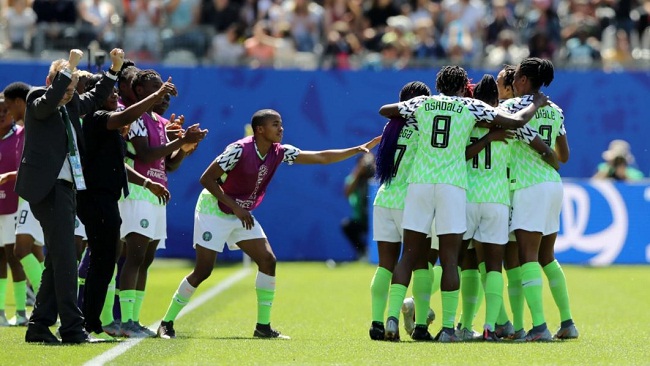FIFA Set To Invest $1 Billion In Women’s Football
FIFA president, Gianni Infantino is raising the stakes. At the FIFA Football Conference in Milan yesterday, soccer’s supremo again promised to invest $1 billion in the women’s game over the next four years.
“We need to be a little bit brave and a little bit bold if we want to move women’s football onto the next level – we need to stop copying what we do in the men’s game,” said Infantino.
Last June, at the annual congress of the world federation, Infantino earmarked $500 million for the women’s game in the 2019-2022 cycle, responding to criticism over the minimal prize money on offer at the Women’s World Cup in France.
After the unprecedented success of the competition, that plan was quickly revised.
“There will be a before, and an after, the Women’s World Cup 2019, in terms of women’s football,” said Infantino this summer, but details on how the $1 billion will be funded, distributed and audited to ensure that it reaches women and girls at the grassroots and truly grows the game, remain vague.
Infantino noted that FIFA, legally a non-profit organization, has cash reserves of $2.7 billion, its robust financial position the result of the blockbuster World Cup in Russia.
FIFA will, however, need national member associations and the continental federations to address the chronic problems of compliance that have affected women’s soccer at the national level.
Every member association is entitled to money from the world federation, but to receive the maximum amount of funding federations must meet certain criteria, including investment in women’s soccer, according to FIFA’s Forward 2.0 programme.
These criteria include: a) organising a regular, nation-wide women’s competition that lasts over a period of six months, involves at least ten teams, and plays at least 90 matches; b) having an active women’s A national team that plays at least four official or friendly matches in one calendar year; c) organizing regular, nation-wide girls’ competitions in at least two age categories with the same specifications as the women’s competition; and d) having active girls’ national teams in at least two age categories who play at least four games per calendar year.
Federations that produce less than $4 million per year in revenue can also apply for extra funding as long as they meet the above criteria.
Jamaica and Thailand reached the finals in France with the backing of individual benefactors, namely Nualphan Lamsam and Cedalla Marley, the daughter of Bob Marley.
Since the World Cup, the Reggae Girlz have been in a payment dispute with the JFF, the Jamaica Football Federation.
Argentina and Nigeria, other participants in the World Cup, had been cash-strapped for years.
Roughly a quarter of FIFA member associations simply don’t field senior women’s teams. Pakistan’s women’s national team last played a game in 2014, the year the national league became defunct.
After participating in the 2015 Women’s World Cup, Colombia barely played competitive soccer.
It is not all doom and gloom: Mauritania invested in excess of $100,000 since 2016. In July and August the Mauritanian women’s national team played its first official matches, including a tournament in Spain.
Some member associations have historically underinvested in the women’s game or simply ticked the box for funding. Progress and development will require more than just funding.
The women’s game needs to map out the future at national or international level or run the risk of becoming soccer’s Olympics: generating mass attention once every four years before fading into the background.
Infantino also wants to launch a Women’s Club World Cup within the next two years and revive his idea for a Women’s World League, mimicking a Nations League on a global scale.
In 2017, the league had been proposed as an annual competition featuring 16 of the top national teams, plus four regional leagues and a system of promotion and relegation.
The FIFA president faced opposition from Europe over what it perceived to be a unilateral action from Infantino. It is understood that the Europeans argued that the idea was presented as a fait accompli without enough detail.
With investment and ideas for new competitions the world governing body is showing a willingness to do things differently, but reshaping the top of the women’s soccer pyramid will do little to help the countless girls and women who struggle to play organized soccer at home.
• Culled from forbes.com




